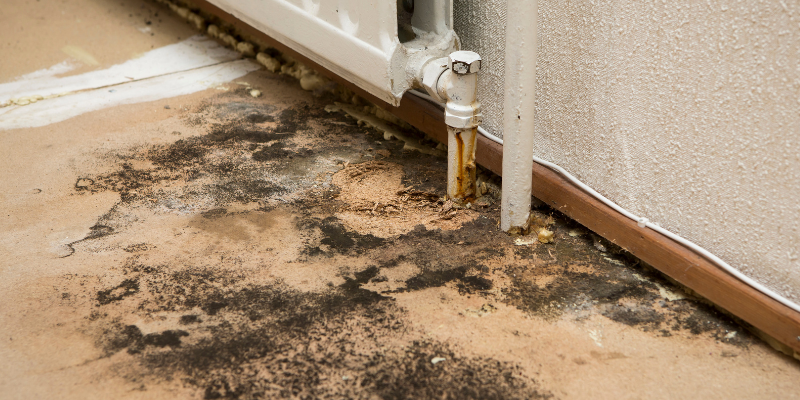Mold can have devastating consequences on both your health and your home. From causing respiratory problems to ruining personal belongings, mold infestations often result in significant physical, emotional, and financial harm. If a landlord, property owner, contractor, or builder is responsible for allowing mold to grow and flourish in a building, tenants or homeowners have the right to seek compensation through a mold lawsuit. One of the key questions plaintiffs often have is: what can I expect in terms of mold lawsuit settlement amounts?
This article will explore the factors that influence mold lawsuit settlements, provide an overview of notable mold lawsuit settlement amounts, and discuss how you can pursue compensation if you’ve been affected by mold exposure in Illinois.
Understanding Mold Lawsuits: When and Why They Arise
Mold lawsuits typically arise when mold infestations, including toxic mold like black mold, are caused by the negligence or misconduct of another party, such as a landlord, property management company, construction firm, or property developer. Plaintiffs in these toxic mold cases often claim that the responsible party failed to address water intrusion issues, such as leaky roofs or plumbing, which led to dangerous levels of mold growth. When this negligence results in mold injury, health issues, or property damage, plaintiffs can file lawsuits to seek compensation for the health effects and damages caused by the presence of mold.
Common reasons for filing a mold lawsuit include:
Health Issues: Mold exposure, particularly to specific mold types, can lead to respiratory problems, chronic allergies, asthma, sinus issues, skin rashes, and in severe cases, life-threatening conditions due to mold spores or mycotoxins. Certain individuals, including those with compromised immune systems or pre-existing respiratory conditions, are especially vulnerable to the health hazard posed by mold.
Property Damage: Mold can destroy walls, flooring, furniture, and personal belongings. Remediation and replacement costs can be significant, especially in cases where mold has deeply infiltrated a structure due to construction defects.
Lost Income and Relocation Costs: Severe mold infestations can force tenants or homeowners to vacate their rental property, leading to temporary relocation expenses, lost rental income for landlords, and other financial losses. In some cases, addressing mold requires specialized mold testing to ensure that all sources of contamination are eradicated.
Factors That Influence Mold Lawsuit Settlement Amounts
The amount of compensation a plaintiff can recover in a mold lawsuit depends on several factors, including the severity of the mold-related damages and the level of negligence on the part of the defendant. Below are some of the key factors that influence mold lawsuit settlement amounts:
1. Severity of Health Issues
The more severe the health consequences of mold exposure, the higher the potential settlement. For example, a plaintiff who develops severe respiratory issues or other chronic health conditions due to mold exposure may receive a larger settlement than someone with only minor symptoms like allergies. If the plaintiff requires extensive medical treatment, hospitalization, or ongoing care, these costs will also drive up the settlement amount.
2. Extent of Property Damage
If mold damages the structure of a home or a tenant’s personal belongings, the cost of repairing or replacing the damaged property will also impact the settlement amount. A plaintiff whose home requires extensive mold remediation or repairs to walls, flooring, and HVAC systems will likely receive a higher settlement than someone who only experiences minor property damage.
3. Lost Income or Displacement
If mold forces a homeowner or tenant to vacate the property, leading to temporary relocation expenses or lost income, these costs may be recoverable in a lawsuit. Plaintiffs who are unable to work due to mold-related health issues or who incur significant relocation costs may see a larger settlement.
4. Degree of Negligence
The level of negligence on the part of the defendant will play a significant role in determining the size of the settlement. If a landlord or property owner ignored multiple complaints about water leaks or failed to conduct proper mold inspections, the plaintiff’s case for negligence will be stronger, potentially leading to a larger settlement. On the other hand, if the defendant can show that they took reasonable steps to address the mold issue, the settlement amount may be lower.
5. Expert Testimony
Expert testimony is often critical in mold cases, especially when it comes to proving that the mold exposure caused the plaintiff’s health problems. If the plaintiff presents compelling evidence from medical professionals and mold experts linking the exposure to specific health issues, this can bolster the case and lead to higher settlement amounts.
6. Insurance Coverage
In many mold lawsuits, insurance plays a key role. If the responsible party has comprehensive insurance coverage that includes mold-related claims, the chances of a larger settlement increase. However, if the defendant’s insurance policy excludes mold claims, the plaintiff may face challenges in recovering significant compensation.
Notable Mold Lawsuit Settlement Amounts
While settlement amounts in mold cases can vary widely depending on the factors mentioned above, some notable mold lawsuits have resulted in substantial payouts. Below are a few examples of significant mold lawsuit settlement amounts from cases across the U.S., including factors that contributed to the large awards.
Mario Palermo, the lead attorney at Palermo Law Group, recently obtained a Cook County jury verdict of $1,200,000 for a woman who developed debilitating symptoms as a result of being exposed to mold. It’s noteworthy that she did not know she was exposed to mold and was originally diagnosed with lupus. This tolled the statute of limitations as the mold was not visible and was only discovered after a water leak. Her homeowners association at her condominium failed to timely stop the leaks after the mold was discovered. This resulted in her family being displaced from her home for years.
1. Ballard v. Farmers Insurance Group (Texas, 2001)
In one of the most famous mold cases, Melinda Ballard sued Farmers Insurance for failing to properly address water damage that led to toxic mold growth in her home. She claimed the mold caused severe health problems for her family and extensive damage to the property.
- Settlement Amount: $32 million (later reduced to $4 million on appeal)
- Key Factors: This case involved severe property damage, health issues, and allegations that the insurance company acted in bad faith by not addressing the water damage in a timely manner. The high level of negligence and the resulting property loss contributed to the substantial award.
2. Landlord Liability Case (California, 2016)
In another significant case, tenants sued their landlord after discovering a severe mold infestation in their rental unit, which caused respiratory issues, headaches, and other health problems. The landlord had been aware of the mold problem but failed to take action.
- Settlement Amount: $1.6 million
- Key Factors: The tenants presented clear evidence of health problems caused by the mold, as well as multiple instances where the landlord ignored their complaints. The severity of the mold infestation and the health impact on the tenants were critical in securing this settlement.
3. Benton v. Pell City Housing Authority (Alabama, 2005)
In this case, tenants of a public housing complex sued the housing authority after mold and mildew were discovered in their units. The plaintiffs claimed that the housing authority’s failure to maintain the property led to serious health issues for the tenants.
- Settlement Amount: $2 million
- Key Factors: The settlement was driven by the housing authority’s clear negligence in maintaining the property and the extensive mold exposure experienced by multiple tenants. The plaintiffs successfully demonstrated the connection between the mold and their health problems.
4. New York Mold Lawsuit (2018)
A group of tenants in New York City sued their landlord after discovering toxic mold growing in their apartment complex. The mold was caused by a combination of leaks and poor ventilation, and tenants suffered from various health problems, including respiratory issues and skin rashes.
- Settlement Amount: $3 million
- Key Factors: The landlord’s failure to address known leaks and ventilation problems, combined with the widespread nature of the mold problem, led to a significant settlement. The health impact on multiple tenants played a major role in driving up the settlement amount.
Pursuing a Mold Lawsuit in Illinois
If you’ve experienced health problems or property damage due to mold exposure in Illinois, you may be entitled to compensation through a mold lawsuit. Whether you’re a tenant dealing with a negligent landlord or a homeowner facing costly repairs due to faulty construction, understanding your rights is crucial. Below are the steps involved in pursuing a mold lawsuit in Illinois:
1. Document the Mold Problem
Before filing a lawsuit, you must document the mold issue and any health or property damage it has caused. Take photos and videos of the mold, keep a record of all medical bills and property repair costs, and save any correspondence with your landlord, property manager, or insurance company.
2. Seek Medical Attention
If you suspect that mold exposure has caused health problems, seek medical attention immediately. A doctor can diagnose the issue and provide evidence linking your symptoms to mold exposure, which will be critical in your case.
3. Notify the Responsible Party
In Illinois, you must notify the responsible party—whether it’s a landlord, property owner, or construction company—of the mold issue. This notice should be in writing and should include a clear description of the problem, any health or property damage, and your request for remediation or compensation.
4. Consult with a Mold Lawsuit Attorney
Mold cases can be complex and require expert testimony from medical professionals and mold remediation specialists. Consulting with an experienced Illinois personal injury attorney who specializes in mold lawsuits is essential to building a strong case. Your attorney can help gather evidence, assess the full extent of your damages, and negotiate a fair settlement.
5. File a Lawsuit if Necessary
If the responsible party refuses to address the mold problem or compensate you for your losses, your attorney can file a lawsuit on your behalf. In Illinois, you typically have two years from the date you discovered the mold-related harm to file a personal injury lawsuit, but the timeline for property damage claims may vary.
Conclusion: What to Expect in Mold Lawsuit Settlements
The amount of compensation you can recover in a mold lawsuit depends on the severity of your health issues, the extent of property damage, and the degree of negligence on the part of the responsible party. While settlement amounts vary, some mold cases have resulted in multi-million dollar payouts, particularly when plaintiffs have suffered severe health consequences or significant property loss.
If you believe you have a case for a mold lawsuit, working with an experienced personal injury attorney is crucial to ensuring you receive the compensation you deserve. By documenting the mold issue, seeking medical attention, and pursuing legal action, you can hold negligent parties accountable and recover damages for your health and property losses.
Working With Palermo Law Group
If you’ve been affected by mold exposure and are considering legal action, Palermo Law Group is here to help. With extensive experience in personal injury claims and toxic mold lawsuits, Mario Palermo has a proven track record of success. Notably, he secured $1.1 million for a single mother severely impacted by mold exposure in her condo, ensuring she received the compensation she deserved for both her health and property damages.
Mold exposure can lead to serious health problems and financial burdens, but you don’t have to face it alone. Working with an experienced attorney like Mr. Palermo can make all the difference in ensuring that negligent parties are held accountable and that you receive the full compensation for your losses. Reach out to Palermo Law Group today to discuss your case and take the first step toward justice.
For a free consultation with Palermo Law Group, contact our law firm by calling (630) 684-2332 or visit our website at https://www.palermolawgroup.com/.


